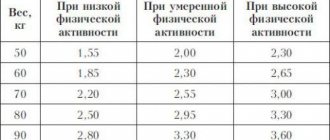To determine mercury in urine, doctors prescribe an analysis of a single portion of morning enuresis. This chemical element is not one of the vital components of the body and enters the blood exclusively from the external environment, causing acute or chronic poisoning depending on the duration of exposure. It is extremely important to consult your doctor when the first negative symptoms appear.
Test for detecting mercury in urine
A large number of toxic compounds are excreted with urine, so the most acceptable biochemical analysis of urine, which uses the method of atomic adsorption spectrometry. It is extremely important to quickly determine the concentration of elemental and ionized forms of mercury that have entered the human body in order to outline the clinical picture of intoxication and select a set of therapeutic measures before internal organs are damaged. Analysis results are prepared within 5-7 days.
Mercury compounds primarily attack the body's excretory system and nervous tissue, giving symptoms similar to organic brain damage. With chronic exposure and lack of proper treatment, coma and death are possible.
Indications for use
The attending physician prescribes a test for preventive purposes for people employed in toxic industries, as well as when symptoms of mercury poisoning appear. It includes the following signs:
Constant fatigue and migraines are factors that indicate illness.
- constant fatigue;
- migraine;
- memory losses;
- decrease in receptor sensitivity;
- change your mood;
- apathy;
- deterioration of coordination;
- lack of appetite;
- deterioration of hearing and vision;
- bleeding gums;
- speech disorders.
Such symptoms are observed in a number of other diseases, so without conducting a urine analysis it is impossible to accurately determine mercury poisoning. Intoxication can also be caused by the intake of other heavy metals, which is often observed among workers in industrial areas. In case of involuntary contact with a toxic metal in any concentration, you should immediately notify your doctor.
How is the analysis done?
24 hours before passing urine, you must stop drinking alcohol, avoid diuretics and medications containing iodine. Before stopping medications, it is strongly recommended to consult with a therapist, inform him of concomitant diseases and reasons for taking medications. Depending on the situation, an alternative to drugs will be prescribed.
Immediately before taking a morning urine sample, it is recommended to take a shower and observe the rules of personal hygiene for the external genitalia. You should not use aromatic and antiseptic agents; it is better to limit yourself to ordinary soap, which should be rinsed off thoroughly so that the tests show an accurate result.
To be tested for mercury, you will need a large amount of urine.
To determine the concentration of mercury, it is necessary to collect a small portion of morning urine in a specialized plastic container, which can be purchased at a pharmacy. It is unacceptable to use non-sterile jars and containers without secure lids. Urine must be sent for laboratory analysis in the next 24 hours; if there is a longer delay, a new portion will be required.
The amount of mercury that is released along with urine does not give grounds to judge the dose of a toxic substance that has entered the body. For this purpose, additional procedures are prescribed.
Types and timing of indoor mercury measurements
To determine the concentration of mercury vapor, instrumental methods (measurements) are used. The following types of research are distinguished:
- original. It is carried out to obtain data on the level and degree of contamination of the premises, to determine the scope of upcoming demercurization work;
- current. Measurements are taken to assess the effectiveness of disinfection measures. They are performed by demercurization workers;
- control. They are carried out to establish whether the concentration of mercury vapor in the air complies with established standards. Before carrying out control measurements, the room must be ventilated for an hour. For premises larger than 50 sq. m the minimum ventilation period is 3 hours;
- final. They are carried out 2 weeks after the completion of demercurization work.
Demercurization is considered effective, after which the maximum permissible concentration of mercury vapor in the air is:
- 0.0017 mg/m3 for industrial premises;
- 0.0003 mg/m3 – for residential.
Compliance with the sequence and timing of measurements allows us to guarantee accurate research results.
If spilled mercury is found indoors, we recommend that you act as follows:
- contact our laboratory for mercury measurements;
- remove people and pets from the premises;
- take measures to prevent the spread of toxic metal to other premises;
- Place wet rags soaked in a solution of potassium permanganate at the thresholds. Subsequently, these rags must be disposed of.
Analysis results
Reference values for mercury concentrations in morning enuresis are 0-0.01 mcg/ml. Exceeding the norm signals intoxication of the body if the patient did not take diuretics and iodine-containing medications before collecting urine. However, the prescription of treatment is based not only on a biochemical analysis of urine, but also on a detailed medical history, taking into account symptoms.
If there is a large amount of mercury in the urine, you should consult a doctor and begin treatment.
With increased concentrations, the patient should remember the circumstances under which the chemical element entered the body, as this will help clarify the degree of intoxication. In case of acute intoxication, inorganic mercury compounds most often enter through the gastrointestinal tract, and in case of chronic intoxication, through regular inhalation of toxic vapors over a period of 2-3 months.
Reasons for deviation from the norm
When interpreting a urine test, the norm is considered to be a mercury content of 0-0.01 mcg/g. It is important to note that even with positive decoding rates, other features of the patients’ clinical condition should be taken into account. Since this analysis is included in a comprehensive examination and is not the main determining factor in diagnosis. When the permissible norm in urine increases, the reasons may be:
- poisoning with organic and inorganic compounds;
- excessive presence in the body of the metallic form of a given element.
What to do in case of mercury poisoning?
Treatment varies depending on the symptoms of the disease, the form of intoxication and the stage of the disease. Most often, it is enough to prescribe complexing drugs and adjust the diet to bind and remove mercury compounds from the body. However, in critical cases, urgent hospitalization may be necessary, followed by connection to a ventilator.
The patient must be isolated from the source of mercury compounds, which is especially important for chronic poisoning in an industrial area. It is recommended to change jobs after undergoing outpatient or inpatient treatment so as not to provoke re-intoxication. If this is not possible, then you should regularly have your urine tested to monitor the concentration of the element in the body. Self-medication and delaying a visit to the hospital is strictly prohibited, as it can lead to death.
Types of poisoning
Mercury poisoning is classified into acute and chronic.
Acute poisoning includes one-time contact with mercury. Symptoms of chronic poisoning include:
- metallic taste in the mouth;
- a sharp deterioration in health;
- burning in the lungs and/or mouth.
People who have direct contact with metal, most often working in chemical or metallurgical production, are susceptible to such intoxications.
Chronic poisoning occurs with small but regular doses of mercury.
General information
Mercury is a highly toxic metal that can accumulate in body tissues.
It is the only metal that is liquid at room temperature. It can exist in several forms: metallic (in the form of vapor or liquid), ionized (in the form of inorganic compounds) or in complex with a hydrocarbon in the form of organic compounds. Mercury metal is often used in thermometers, dental amalgam fillings, and batteries. Mercury salts (inorganic compounds) may be part of some antiseptic substances and cosmetics (creams, ointments, solutions). Organic mercury compounds are typically methylmercury, which is produced by bacteria in soil and water and is also often found in large, old predatory fish (eg, shark, king mackerel, tilefish, swordfish).
Other Biochemical studies: Comprehensive urine analysis for the presence of heavy metals and trace elements Lead (Pb) in urine
Normally, mercury is found in nature in small quantities, and environmental pollution with its inorganic compounds occurs when burning fuel and garbage waste, using pesticides with mercury compounds, and during its use in industry.
This metal enters the human body through the lungs by inhaling mercury vapor, through intact skin due to absorption, or by consuming contaminated food. Typically, the small amounts of mercury that most people come into contact with have no negative health effects.
Mercury poisoning can be acute or chronic. The risk of poisoning is increased among steelworkers, miners, and workers at chemical and metallurgical plants.
The amount of mercury ingested and its health effects depend on the form of mercury, the concentration, and the period of exposure. For example, when metallic mercury is ingested, only 0.01% of the total substance is absorbed in the intestines, but the same amount of metal ingested through the lungs as vapor is absorbed into the bloodstream by 80%.
Organic mercury compounds are more toxic due to their lipophilicity, ability to interact more actively with human tissues and inhibit certain enzyme systems in cells. Organic mercury compounds, which are found in some seafood and fish, are 95% absorbed in the digestive tract. Methylmercury poisoning most often occurs when eating large predatory fish or fish that live in contaminated water.
Mercury that enters the body is partially excreted in urine and feces and accumulates in various organs and tissues, primarily affecting the kidneys and nervous system. Pregnant women and young children are most susceptible to the toxic effects of mercury. Mercury can enter the baby's body through breastfeeding.
Symptoms of acute mercury poisoning include a burning sensation in the mouth and lungs, salivation, a metallic taste in the mouth, cough, difficulty breathing, chest tightness, decreased urination, severe abdominal pain, nausea, vomiting, diarrhea, rapid pulse, increased body temperature , profuse sweating. In severe cases, acute poisoning can be fatal.
Chronic mercury poisoning occurs when exposed to small doses of mercury over several months or years. Its clinical manifestations are associated with damage to the lungs, kidneys and nervous system and may include hearing, vision, taste and smell of mercury, tremors of the hands and feet, difficulty walking, emotional instability, headaches, apathy, memory loss, damage to the oral mucosa and gums, nephropathy.
Regular monitoring of mercury levels in the body is recommended for everyone who works in industry interacting with mercury and other heavy metals.
Preparation before taking the test
The presence of heavy metals in the body is checked through biochemical testing. 24 hours before donating the biomaterial, it is necessary to exclude:
- any alcoholic drinks;
- diuretics;
- medications that contain iodine.
Note: if you are taking any pills, you should consult with your doctor about stopping taking them during the test or temporarily replacing medications.
Before directly collecting urine, it is necessary to clean the skin in the intimate area with soap and warm water. It is not recommended to use antiseptics, as this may cause allergies.
The biomaterial is collected in the morning in a special sterile jar with a tight-fitting lid (the jar can be purchased at a pharmacy). Urine should be submitted for analysis within 24 hours after collection, otherwise the procedure will have to be repeated again.
Content standard
Upon completion of the study, the metal content in the urine is indicated in the conclusion. The normal mercury content is considered to be from 0 to 0.01 μg/ml.
Known cases of poisoning
Mass poisonings are associated mainly with organic mercury compounds, primarily methylmercury. As a result, Minamata disease develops:
- Mass poisoning in Kumamoto Prefecture due to systematic pollution of the bay with wastewater from a chemical plant.
- Canadian environmental disaster in 1970 due to pollution of water resources by chemical runoff.
- Niigata Minamata disease (English)Russian due to pollution of water resources by chemical effluents.
- Mass methylmercury poisoning in Iraq (1971) due to the use of methylmercury-treated grain.
There were also high-risk occupations associated with mercury:
- Some methods of applying gold plating.
- Hatters (making felt using old methods) (see Mad as a hatter (English) Russian).











